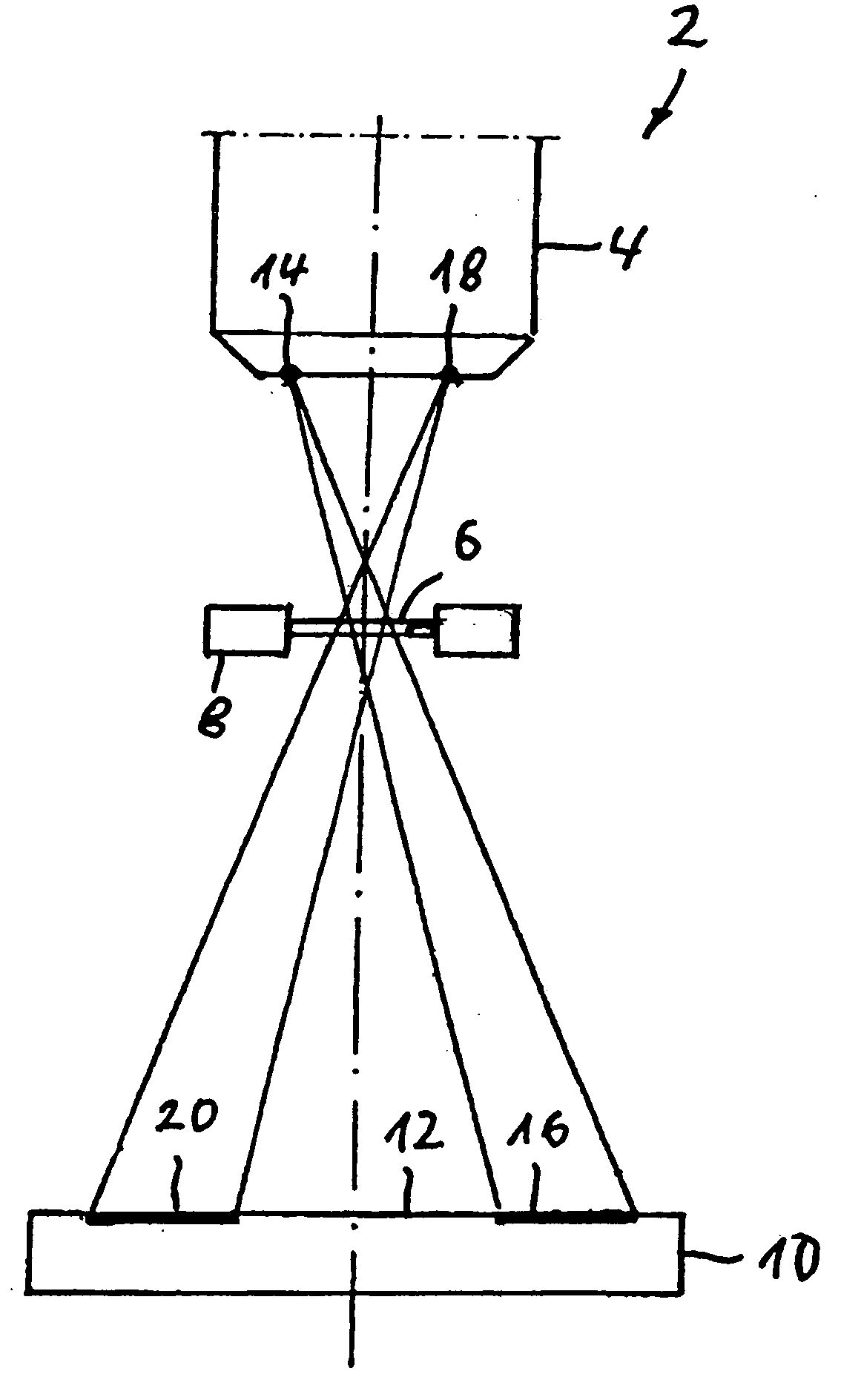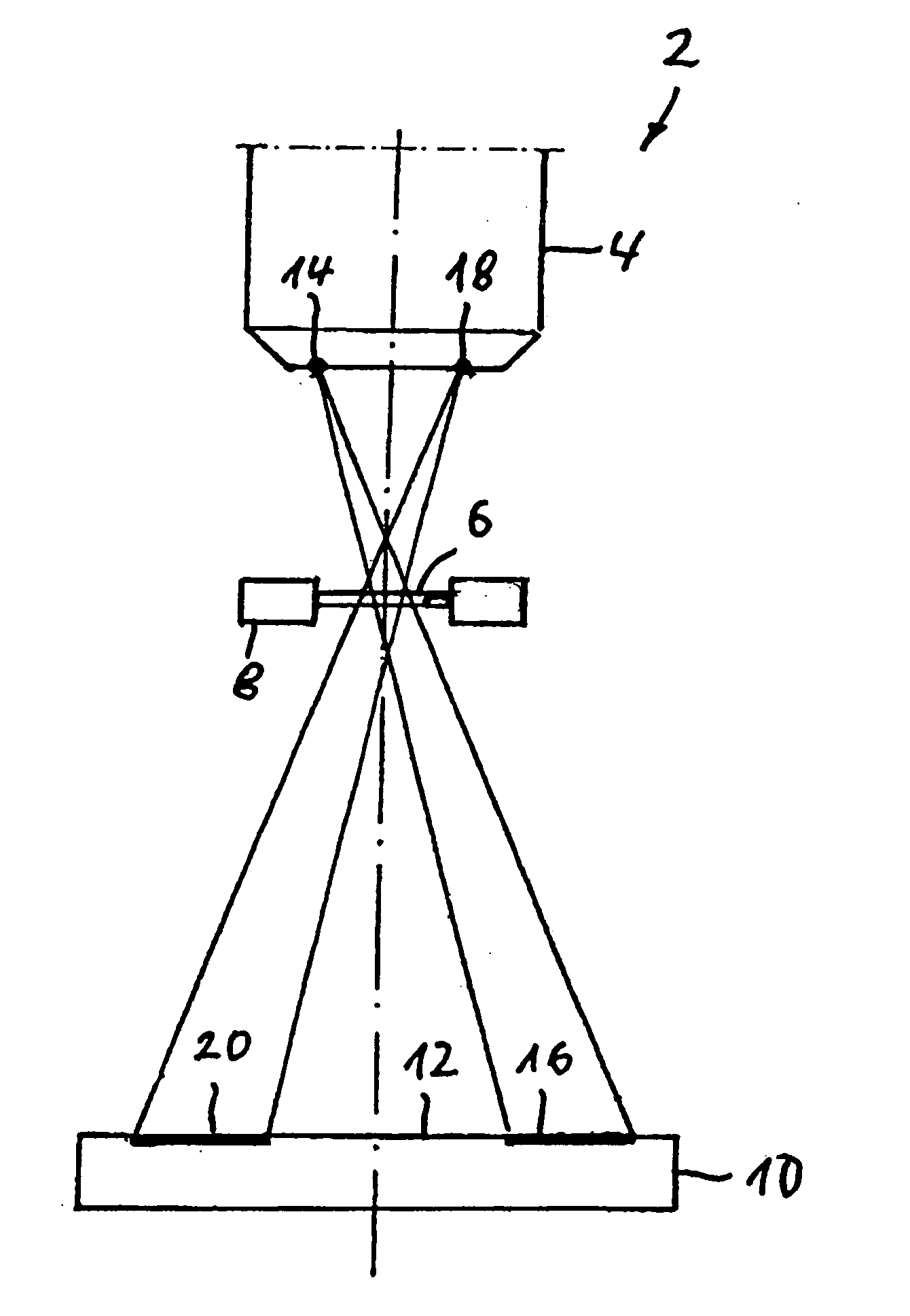Apparatus for X-ray laminography and/or tomosynthesis
a technology of x-ray laminography and tomosynthesis, applied in the field of apparatus for x-ray laminography and/or x-ray tomosynthesis, can solve the problems of increasing disadvantage, increasing mechanical complexity, complex and expensive manufacture of known apparatuses, etc., and avoiding mechanical movement of rather large masses and facilitating and rapid evaluation of recorded images
- Summary
- Abstract
- Description
- Claims
- Application Information
AI Technical Summary
Benefits of technology
Problems solved by technology
Method used
Image
Examples
Embodiment Construction
[0025]An apparatus 2 in accordance with the invention for X-ray laminography and / or X-ray tomosynthesis is shown in the drawing and includes a stationary X-ray tube 4 with an X-ray source arranged so that it can move in the inside of the X-ray tube for generating X-ray radiation for a scanning radiograph of the object to be examined 6. The X-ray source is movably arranged in the inside of X-ray tube 4 for scanning radiographing of object 6 to be examined.
[0026]Apparatus 2 furthermore includes a holder 8 on which or in which object 6 to be examined, e.g., an electronic printed card, is held stationary during a radiography sequence when carrying out the laminography process or the tomosynthesis process. After the end of a radiography sequence, holder 8 can be moved into a new position in order to move another part of the previously examined object into the image and examine it. Furthermore, apparatus 2 in accordance with the invention includes a stationary X-ray detector 10 for detect...
PUM
| Property | Measurement | Unit |
|---|---|---|
| distance | aaaaa | aaaaa |
| mechanical complexity | aaaaa | aaaaa |
| time | aaaaa | aaaaa |
Abstract
Description
Claims
Application Information
 Login to View More
Login to View More - R&D
- Intellectual Property
- Life Sciences
- Materials
- Tech Scout
- Unparalleled Data Quality
- Higher Quality Content
- 60% Fewer Hallucinations
Browse by: Latest US Patents, China's latest patents, Technical Efficacy Thesaurus, Application Domain, Technology Topic, Popular Technical Reports.
© 2025 PatSnap. All rights reserved.Legal|Privacy policy|Modern Slavery Act Transparency Statement|Sitemap|About US| Contact US: help@patsnap.com


